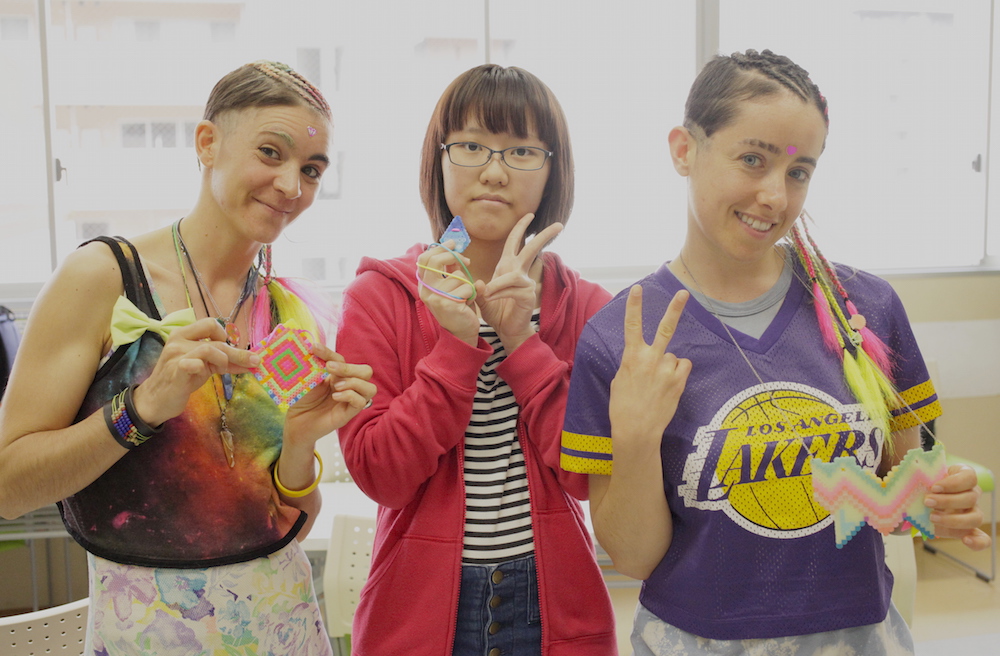Featured Image: Go! Push Pops and Seiko Kitayama collaboration feat. Egyptian Lovher during the Tokyo Performing Arts Fest (TPAF), Nakano Zero Art Gallery, 2015 photo credit: Mamoru Kimura
“I don’t know why I was born a woman. I don’t know why I’m not a boy. Sexuality in my heart is not so separate as woman and man. I want to change back and forth.”
Push Pops: How did you start doing performance art?
Seiko Kitayama: At first I put my body to the canvas and drew my body shape. Then I made a puppet of myself. I went to see Hoichi Okamoto, a famous puppet theater artist. He uses female puppets wearing traditional Japanese kimonos. I went to his workshop and asked him to make a play using my puppet for me. He became ill, and the next year he died. I had no opportunity to perform this puppet theater performance so I looked for a new venue. Some performance artist friends introduced me to the Nippon International Performance Art Festival (NIPAF). It was organized by Seiji Shimoda, a famous Japanese performance artist. I learned performance from his workshops. This was my start. My illness is also an influence to my performance. From age 23-30 I would sometimes go into a deep depression. When I would go through difficult situations and becomes depressed I would make a performance in my house.
PP: Therapeutic performance art?
SK: I did it to fight my sickness, this was some call to start performing.
PP: We really like the piece you did in Miami with the paint as the ocean, the penis straws, and your sort of vaginal monument you made with your naked body and the coral. Wow. We had never seen anything quite like that, and to let the audience blow paint onto your naked body like that. Can you explain what you were doing?
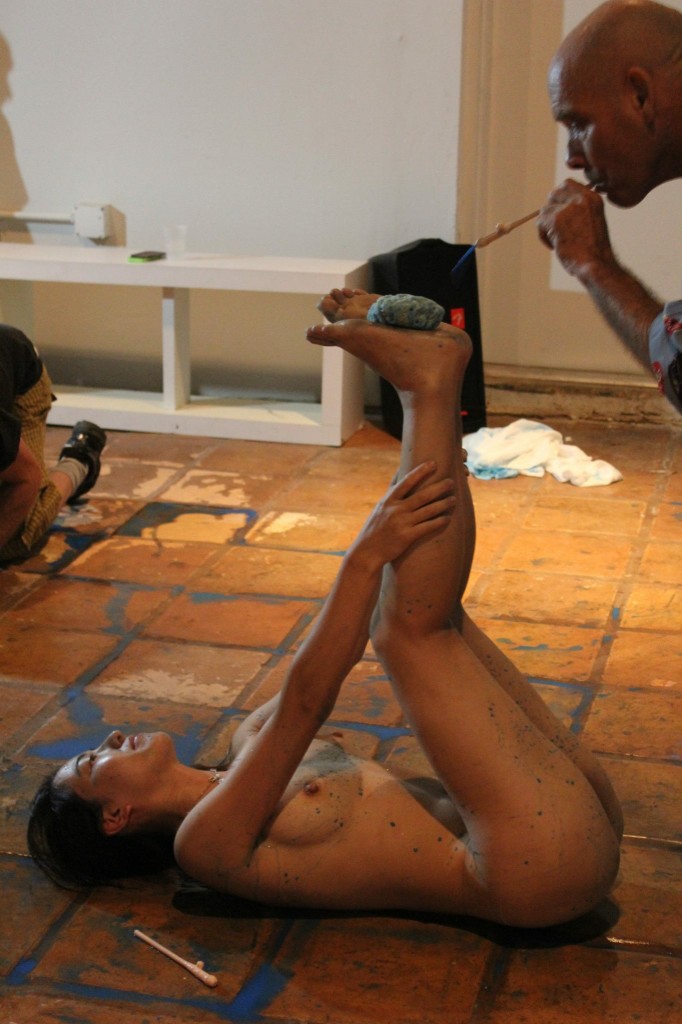
SK: Only a few times I have been naked. That work dealt with the gender problem. How to explain?
PP: I know I am sorry it must be hard enough to explain in your own language. Being art, it kind of starts from a place outside of language.
SK: I got the materials in Miami. I went to the supermarket and I saw the party straws with penis and I thought “Oh, wow!!”
PP: Do you have that in Japan?
SK: Yes, but it’s not that available. We can get things like that if we go to some very deep place….or of course, the United States. Japanese think that America is very open sexually, but I’ve also heard many people don’t look at sexual images for religious reasons. Japanese are not very open or communicative about sex, and yet all of the Japanese men see the sexual photos. It’s a very big split. All the convenient stores have the sexual magazine, it’s a very funny difference. I became naked to see the reaction of the American people. Also, when I became naked many people were surprised. And they were very surprised when I let the audience members blow paint through the penis straws onto my vagina.
PP: Yeah!! We were shocked.
SK: Many people were shocked. I don’t know why I was born a woman. I don’t know why I’m not a boy. Sexuality in my heart is not so separate as woman and man. I want to change back and forth.
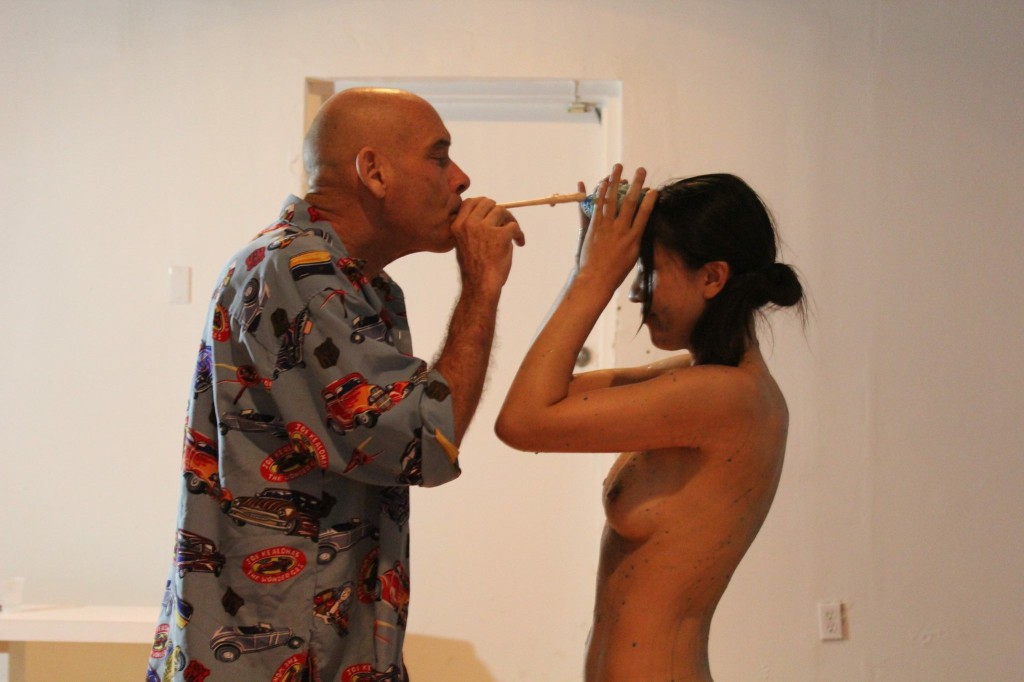
PP: In the United States we say queer, the blurring of gender boundaries.
SK: There are many switching points in my performance.
PP: That’s a common thread in your performance, becoming a boy?
SK: Yes because when I picked up the straw and blew the liquid through it I became the man. And then I changed into the woman and the audience became the man.
PP: You are role-playing the male gender within the context of a patriarchal world in which men have the power. There is a radical feminist agenda there. There’s also a mystical element to crossing the gender boundary, and as you explained to us during our Pray Wild workshop, your great Grandfather was a shaman. Obviously, gender fucking and shape-shifting has historically played a huge role in both ancient and contemporary Arts. How do you situate your work in terms of Japanese Feminist Art and other female artists?
SK: There are not very many Japanese feminist artists. I only know of two. Noroko Ohashi is a famous Japanese feminist performance artist and many times she has participated in NIPAF and performed naked. She uses symbols on her body, a very humorous performance. Miyaki Inukai is also very woman’s identity-based. She was having difficulty conceiving a child so she made some work about that problem. She put a carton of eggs on her stomach using tape and scissors, wearing only a bra and stockings. She put one dozen eggs in her stockings and attached an umbrella to a string. She used the umbrella as the male penis until all the eggs broke open. Her work is very interesting.
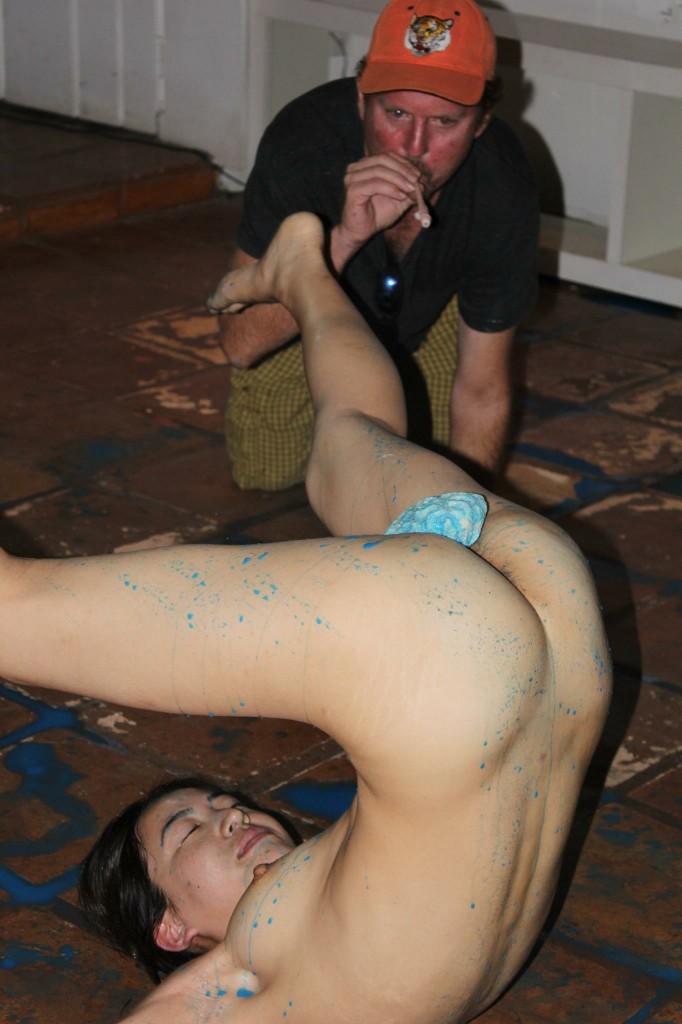
PP: And is there a strong group of male performance artists that operate independently of women?
SK: Performance art is actually primarily women in Japan. Male artists do more painting and sculpture. Oh! One young male performance artist, Shopei Nomoto, is really good. His performance is about sex.
PP: Let’s talk about how during Confucianism, the Japanese government made female performance illegal forcing women artists underground into erotic industries and hiring men to play women’s roles in official theater. Literally, the top Kyoto government administrator ordered a ban of Kabuki performed ukareme, which translates to “playful women,” or “women whose feet are off the ground.” Does your work today relate to or respond to this herstory?
SK: Ah, the Japanese history. Kabuki theater not allowing women.
PP: Yes, Confucianism really forced women into rigid roles as dutiful mothers doing endless unpaid labor.
SK: In the beginning, there were many women Kabuki performers as well as men. Many were prostitutes, and eventually the government banned women from Kabuki. Many Japanese women went on to become fortune-tellers. That is a type of female performance art. When we do performance art, a little part of us becomes a fortune-teller. Confucianism did not allow Samurai class women to work. In the farmer and merchant classes, women’s work was lively.
PP: And how do you situate your practice in terms of the carnivalesque type of fashion display Japanese gyaru of Shibuya and Harajuku are known for, ganguro, yamanba, in a way that’s like a type of performance art? Maybe one that is more pop or mainstream…
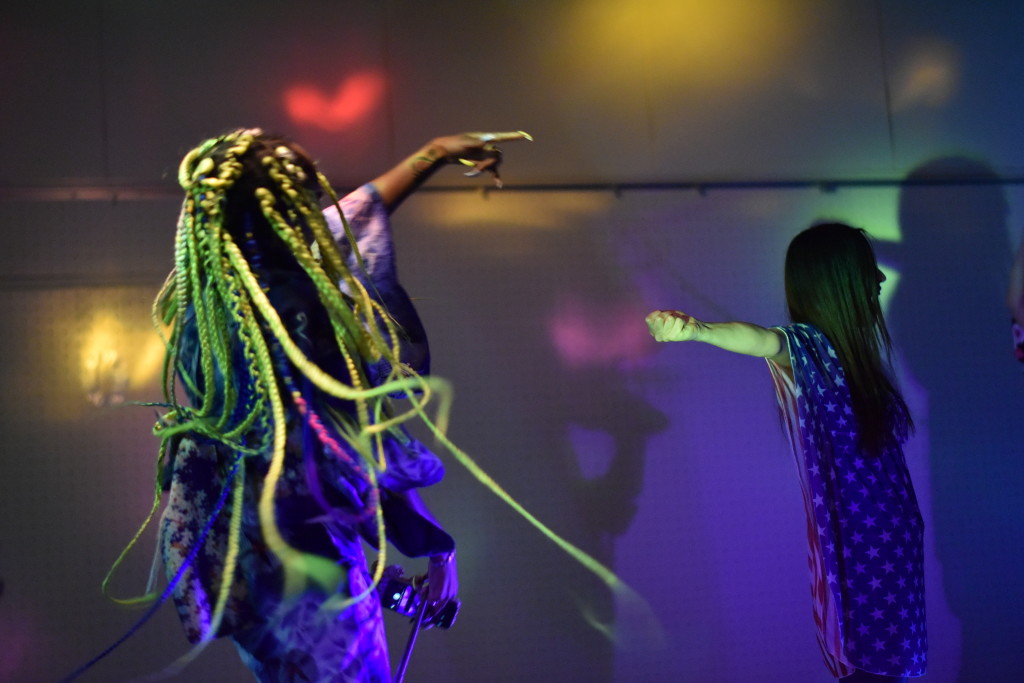
SK: Yes, it’s a type of performance art. I love the Harajuku women and the pop colors. But thinking about my performance, what I like is more simple materials than fashion. Maybe in the future I incorporate some of those elements. Right now I love simple material. My concept is more important than the appearance of it.
PP: Is there anything else you want to tell to the New York Art World?
SK: I want to go to New York and perform so much. And I want to see New York City performance art and understand the differences. When I go to the Bangladesh Performance festival I noticed many performers use red colors as a symbol of nationalism. Their independence was only about 40 years ago…the color red is a type of revolutionary color. Probably in NYC, many histories and many cultures have influenced the performance art there. Now Japan is a little bit too sensitive for some of my work. People are too sensitive. Japan is not a good place to express through my performance work, even painting and other works. It is becoming difficult, artists are needed.
PP: Your piece you did in Miami, could you do that here in Japan?
SK: Yes, but my Mama would cry.
